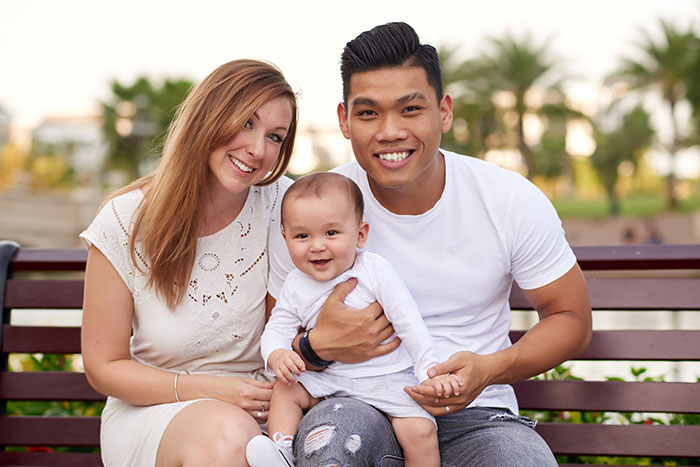
Marriage and Family: Navigating Cultural Differences for Healthier Relationships
Navigating cultural differences is a large part of what makes traveling so fun. At home, however, differing cultural norms and expectations can lead to tension within marriages or among family members.
Many of my patients struggle to bridge a cultural divide between them and their spouse–who is of a different culture, country, and/or religion–or between immigrant parents and first-generation children. Communicating across this chasm takes understanding, empathy, flexibility, and most importantly, practice.
Below, I explain the most common issues I see between spouses or loved ones of different cultures, such as:
1. Mismatched expectations around gender roles or parenting styles
2. A lack of understanding between parents and children who grew up in different places
3. Communication challenges or hostility between spouses or family members
4. Struggles around moving to America and adapting to everyday cultural differences and expectations
I also share some of the most effective strategies for overcoming these challenges to promote greater love and understanding.
Issue 1: Mismatched expectations around gender roles or parenting roles and styles
In romantic relationships, each of us come with certain assumptions and expectations about how our significant other should behave. These expectations about gender roles and parenting styles may be pretty far apart when partners come from different cultures and backgrounds.
For example, a woman born in China may believe that her spouse should be the sole family provider for their nuclear family while she raises the kids. The American husband may believe that both spouses should work full-time to support the family while a nanny provides the childcare. He might also want the family to primarily speak English at home, while his wife and in-laws want to raise the children mostly in Mandarin.
You may not even realize that you hold these internal assumptions around relationships and childcare, or that your partner and extended family don’t agree, until you fight about them for the first time. Experienced again and again, these disagreements cause significant marital and familial conflict.
The Solution:
Like with any type of martial or familial conflict, differing cultural expectations around familial roles and parenting are best resolved through better communication. In couples counseling, I help my patients agree upon their shared vision of the ideal marriage, home in on what each person would like to improve, and create a path forward.
Some general questions that could help you do this in your family or relationship include:
- What do you need from me?
- What can I do to support you?
- How can I make you feel loved?
- What can I do to make you happier?
- What do you like best about our relationship?
- What would our perfect relationship look like?
This is a great way to uncover assumptions and expectations that are leading to disagreements and have calm, positive discussion about how to move forward.

Issue 2: A lack of understanding between parents and children who grew up in different places
Cultural divisions also frequently show up between immigrant parents and first-generation children who grow up in different countries. Although they may be of the same race, their backgrounds could be completely different.
For instance, Korean parents who grew up in post-war South Korea and their Korean-American children growing up in the United States in the 2000s experience very different childhoods that determine their world view, values, communication style, and more. This can lead to consistent friction in the relationship.
Teenagers may feel misunderstood and smothered, causing them to act out in unhealthy ways, which can lead parents to become fearful for their children’s safety and become even more overprotective.
The Solution:
Bridging cultural divides within families comes down to a few essentials:
1. Allowing everyone to feel heard and be receptive about what is trying to be communicated
2. Examining what is needed to feel safe and secure in a relationship
3. Enhancing flexibility and resiliency
4. Managing fear impulses in a sustainable manner
5. Establishing respectful, realistic, and healthy boundaries
6. Replacing unhealthy expectations with realistic and sustainable ones
If you have tried to work through these issues with your family in the past, to no success, you should consider reaching out to a trained psychologist or family therapist. A neutral third-party can be very helpful in moderating emotionally fraught discussions and ensuring they head in a constructive direction.
During these types of discussions, I encourage family members to give everyone a chance to speak. No interrupting or shouting, just listening and then responding when it is your turn. Afterward, we work on setting healthy boundaries together.
For example, if the teenager feels smothered because their parents want to know where they are every minute, we might try phone check-ins at designated times instead. If parents feel that their child doesn’t respect their culture, perhaps agreeing to speak the parents’ native language at home can demonstrate respect and compassion.
Communicating more effectively, making sure everyone feels respected and heard, and enforcing healthy attachment styles can do wonders in overcoming a lack of understanding between family members who grow up in different places.
Issue 3: Moving to America and struggling to fit in or adapt your “old” culture with your “new” one
Moving to a new country makes us question our identity: Who am I in this new place? How do I integrate elements of my home country into my new home? How can I understand and adapt to new cultural norms that may go against my previous culture?
As a new American, your day-to-day life may be very different from what you are accustomed to, which can be uncomfortable.
The Solution:
The key to adapting to a new way of life is learning to be flexible. You may not love everything about your new home, but adopting a mindset of going with the flow and accepting what comes will make the most of your situation. Try the following strategies to stay flexible:
- Give yourself time. Everyone who experiences a major life change, such as a move or a divorce, goes through an adjustment period where things feel new and overwhelming. Understand that it may take several months or years before you feel at home, or at least, less overwhelmed.
- Be kind. Prioritize self-care, such as cooking your favorite family meals and getting enough sleep. It’s normal to feel homesick, angry, and depressed. You may experience changes in your eating and sleeping habits.
- Connect with others and build your support network. Find a new church, join an English language learning group, meet fellow expats. Lean on your family and friends from your previous home when you need to discuss your frustrations or speak your native language.
- Stay curious. Think of obstacles like figuring out your bus route or shopping for groceries as opportunities to explore your new life.
Finding the middle ground takes practice
When you are from different cultures, meeting your spouse, family members, or neighbors halfway takes practice. The tips above can put you on the right path toward bridging the gap.
If you need additional help communicating with your partner or family member from another culture, or are struggling to navigate the anxieties of a new life, please reach out to me.
I can guide you through depression, anxiety, couples counseling, and similar issues. Schedule an appointment (video or in-person) with me now.













